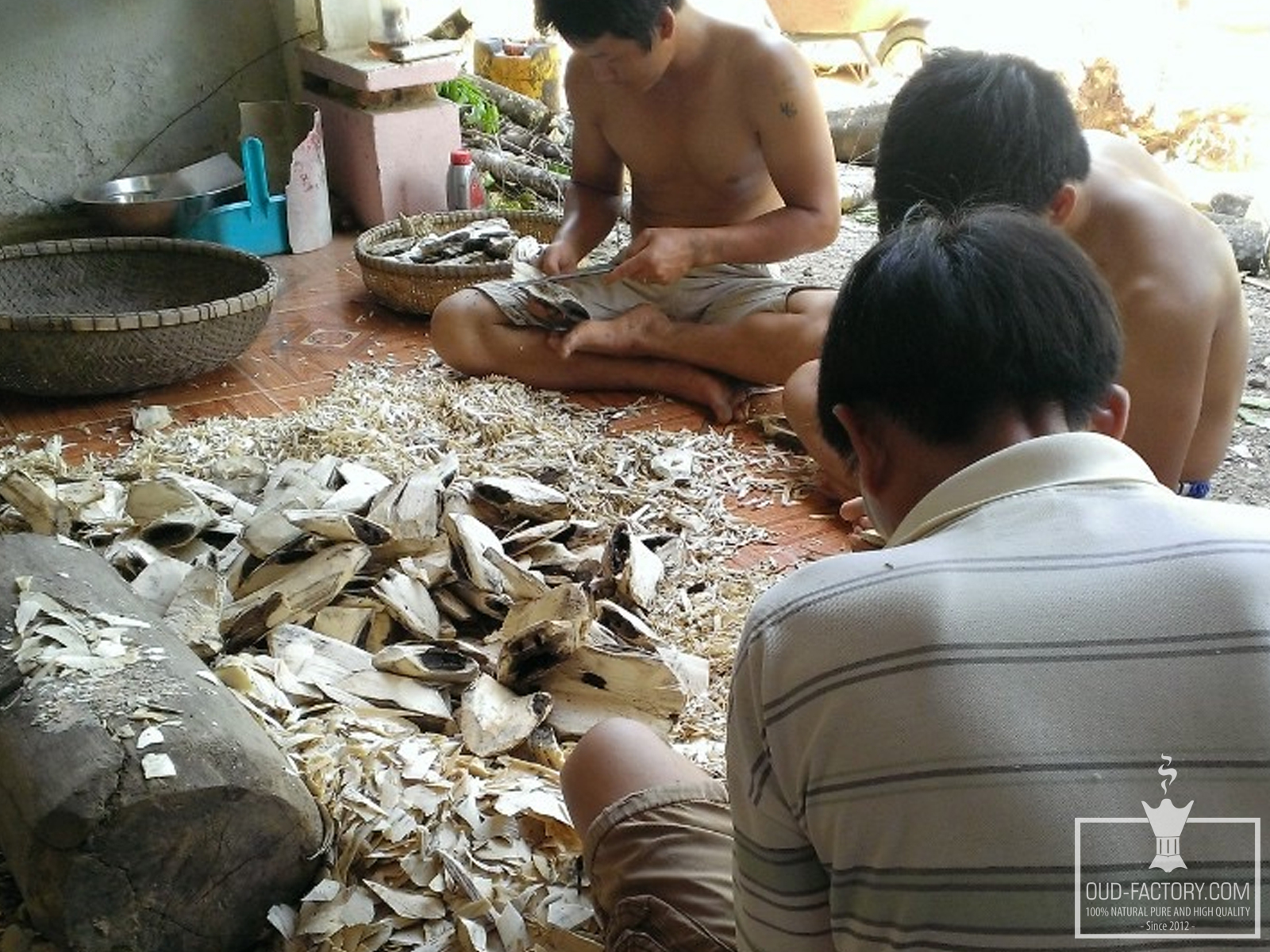What is Natural Agarwood?
Agarwood is created from wounds on the trunk of the “Do Bau” tree, also known as “Aquirilia” in scientific terms. These wounds can occur naturally, such as from a fallen tree, insect infestation, or from the cutting of forest dwellers. They can also be deliberately inflicted by humans. After a period of time, the tree will release a type of oil as an antimicrobial agent to coat and protect the wound. The area of wood and oil surrounding the tree trunk is known as Agarwood. The quality of the oil determines the quality of the Agarwood and is the basis for its classification. The following article from SUHACO company will provide you with a general understanding of the current types of Agarwood, also known as Sanai or Muhassan Oud in some places.
Natural Agarwood type 1 (from old forests):
This type of Agarwood is created from the Aquilaria tree growing naturally in mountain forests. The wounds and mechanism for Agarwood creation occur naturally without any human intervention. This type of Agarwood is classified as having the highest value. Natural Agarwood is mainly found in Southeast Asian regions such as Vietnam, Laos, Cambodia, Indonesia, and Malaysia. However, natural Agarwood is currently scarce due to overhunting and exploitation by humans. The classification of Agarwood is based on the amount of oil accumulated in the wound. Natural Agarwood of the same level of quality is ranked from high to low based on its origin: Vietnam, Laos, Indonesia, Malaysia, etc. In Vietnam, Agarwood is also from the central region, specifically Quang Nam – Da Nang and Khanh Hoa.
Natural Agarwood type 2 (from young forests)
Artificially grown agarwood has a shorter cultivation and planting time compared to natural agarwood. As a result, the amount of oil produced is not enough to be categorized according to the grades of natural agarwood. The total time from planting to harvest ranges from 7-20 years. Not all Aquilaria trees produce agarwood when cultivated, so the price of artificially grown agarwood is not cheap. This type of agarwood is fragrant and widely used in daily life for purposes such as jewelry making, art, or burning incense. Untreated artificially grown agarwood usually does not sink in water. Vietnam was the first country in the world to successfully research and apply the technique of cultivating agarwood. Vietnamese artificial agarwood also has a high value and quality. Currently, agarwood cultivation technology has been applied in Laos, Cambodia, and Indonesia.
Cultivated Agarwood (Sanai – Muhassan Oud – Tiger Oud)
This is currently the most popular type of agarwood used in Middle Eastern countries and is also the main export product of our company, SUHACO. With over 20 years of experience in producing high-end to cultivated-grade agarwood, we are confident that we are leading in market share, quality, and pricing for this segment. In fact, the way it is called depends on each region. These three names (Sanai – Muhassan Oud – Tiger Oud) all refer to the same type of product. Cultivated agarwood refers to agarwood that has undergone two types of processing: agarwood oil extraction and agarwood composite.
- Agarwood oil extraction involves pressing Agarwood together with agarwood oil extracted from the agarwood. The quality of this type of agarwood depends on the quality of the agarwood inside, as well as the quality and quantity of the oil pressed. The oil used for pressing must be pure agarwood oil, not mixed with other substances. The oil is pressed deeply from the inside out. Agarwood composite is a type of agarwood created by combining layers of agarwood with a type of adhesive. The quality of this type of agarwood is determined by the quality of the composite both inside and outside, as well as the amount of adhesive used.
- Processed agarwood is not pure agarwood. However, it has some advantages, such as being heavy, dark, strongly fragrant, and having a living scent (a fragrance that can be smelled directly without burning). The price of this type of agarwood is not too high. This helps to overcome the disadvantages of natural agarwood. Processed agarwood is often used for making jewelry and agarwood art.







